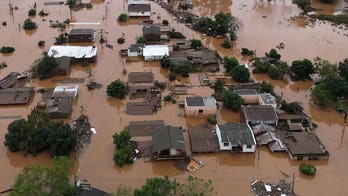A mesmerizing meteor was captured soaring through the Colorado sky, providing a rare celestial spectacle for stargazers. Meanwhile, skywatchers are set for a double meteor shower event with the Southern Delta Aquariids and Alpha Capricornids peaking simultaneously.
A breathtaking meteor lit up the Colorado sky, leaving a trail of awe in its wake. Residents of Broomfield, Colorado, were fortunate to witness the rare celestial event, with multiple camera recordings capturing the incandescent fireball's descent.
This week's celestial calendar promises a double meteor shower extravaganza, with the Southern Delta Aquariids and the Alpha Capricornids reaching their peak. The Delta Aquariids, set to peak on Tuesday morning, will unleash a dazzling display of 15 to 20 meteors per hour in the Northern Hemisphere.

Double Meteor Shower Dazzles Colorado Skies
As the Delta Aquariids grace the night sky, the Alpha Capricornids will also make their appearance, albeit with a slightly less prolific output of approximately five meteors per hour. This doubleheader promises a celestial symphony of shooting stars.
The Southern Delta Aquariid meteor shower, a regular feature of North America's late summer sky, reaches its peak activity in late July. This year, its zenith will coincide with the smaller Alpha Capricornid meteor shower, offering stargazers a double dose of celestial magic.

Double Meteor Shower Dazzles Colorado Skies
Under the cloak of darkness, the Delta Aquariids are expected to put on a vibrant spectacle of 15 to 20 meteors per hour in the Northern Hemisphere, according to the American Meteor Society. In the Southern Hemisphere, the show is set to be even more spectacular. The shower will continue to enchant until August 21st.
Simultaneously, the Alpha Capricornid meteor shower is projected to produce around five meteors per hour, remaining active through August 15th. While not as voluminous as some other showers, the Alpha Capricornids often compensate with brilliant meteors.
"One bright one is worth 20 faint ones," noted University of Warwick astronomer Don Pollacco, emphasizing the allure of these radiant celestial fireworks.
For optimal viewing, stargazers are advised to venture beyond the reach of city lights, where the canvas of the night sky is less obstructed. Dark skies and a waning moon create the most favorable conditions for meteor observation.
It's essential to allow your eyes time to adjust to the darkness, as sudden exposure to bright screens can impair your night vision. "It ruins your night vision," warns NASA's Bill Cooke.
During the peak viewing hours between midnight and predawn, patience is key. With the Southern Hemisphere promised the most captivating view of the Delta Aquariids, the waning moon, around 30% full, will set the stage for an unforgettable celestial encounter after midnight.
For those eager to catch more celestial wonders, the meteor society maintains an updated list of upcoming large meteor showers, providing information on peak viewing days and moonlight conditions. Notably, the Perseids, one of the most prolific meteor showers, is set to grace the skies in mid-August.










